Date: 25 March, 2025
Venue: Sri Aurobindo Society
Watch Glimpses
“Music, no doubt, goes nearest to the infinite and to the essence of things because it relies wholly on the ethereal vehicle, śabda…”
~ Sri Aurobindo
As part of the year-long exploration of ‘Spirit and Forms of Indian Art’ the BhāratShakti department organised a special evening programme focusing on Hindustani Classical Music. This lecture-demonstration titled ‘Sangeet Sandhya’ was held on March 25, 2025 at Sri Aurobindo Society, ground floor hall.
The Sutradhar of the session was Smt. Deepshikha Reddy, Educator and Administrator who is also an accomplished musician in Hindustani Classical Music. The other participants were: Smt. Arjita, Language teacher, musician, and an alumni of SAICE; Shri Gauri Shankar, Vocalist, Tabla player and alumni of SAICE; and Shri Uttam Ganguly, Vocalist, Tabla player and teacher at SAICE.
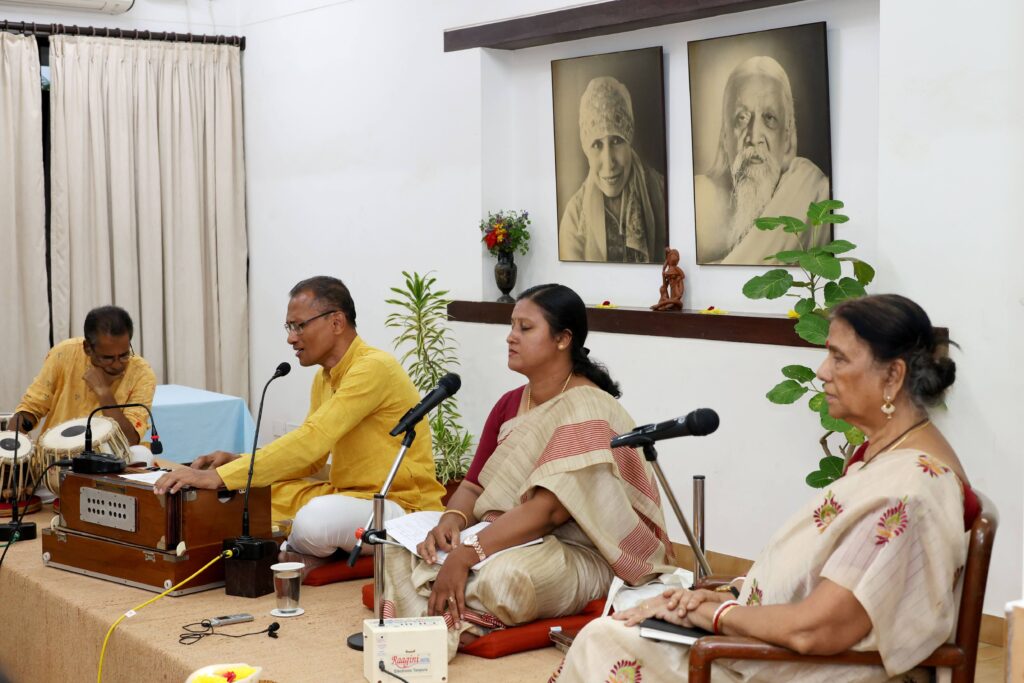
After a few words welcoming the performers and the audience, Dr. Beloo Mehra, Director, BhāratShakti, said that the inspiration of this programme came from the Mother’s words that while music is essentially a spiritual art and has always been associated with religious feeling and an inner life in Indian culture, there has also been especially in the recent times, a tendency to turn music into an independent and self-sufficient activity. As a result technique and mastery have become the key criteria for considering the value of a musical production, or any artistic creation. The inner meaning or purpose of music seems to be getting lost. She added that as part of their exploration of the spirit of Art in India, the department wanted to highlight the deep-rooted connect between music, life and spirit in India.
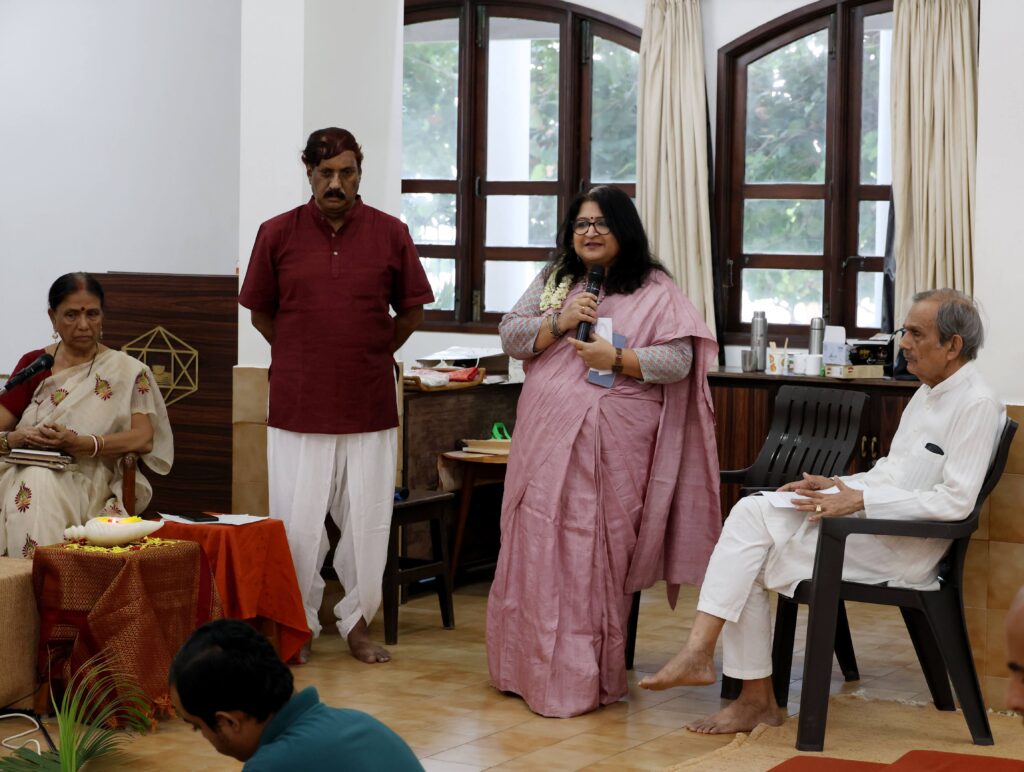
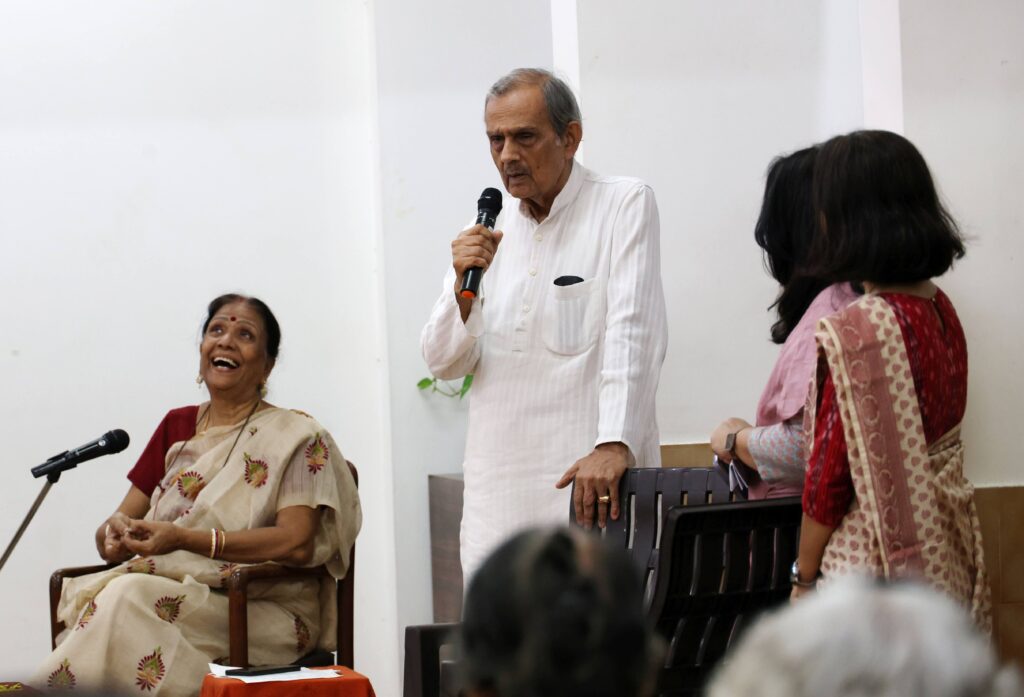
She then requested Shri Pradeep Narang, Chairman, Sri Aurobindo Society to felicitate the performers by presenting an angavastram. He spoke briefly on the primordial sound, Nāda Brahman as the source of all creation, and the essential harmony and rhythm that is at the base of all existence. He also reminded the audience Sri Aurobindo’s famous line – “All music is only the sound of His laughter“. Shri Narendra Murty, Research Associate, BhāratShakti then briefly introduced each of the performers.
Before the actual presentations of musical pieces began, Smt. Deepshika Reddy gave a short history of the evolution of Indian classical music going back in time to the Vedic period and the Vedic hymns which were the first expressions of music in this land. Shri Gauri Shankar demonstrated through chanting a couple of Vedic hymns.
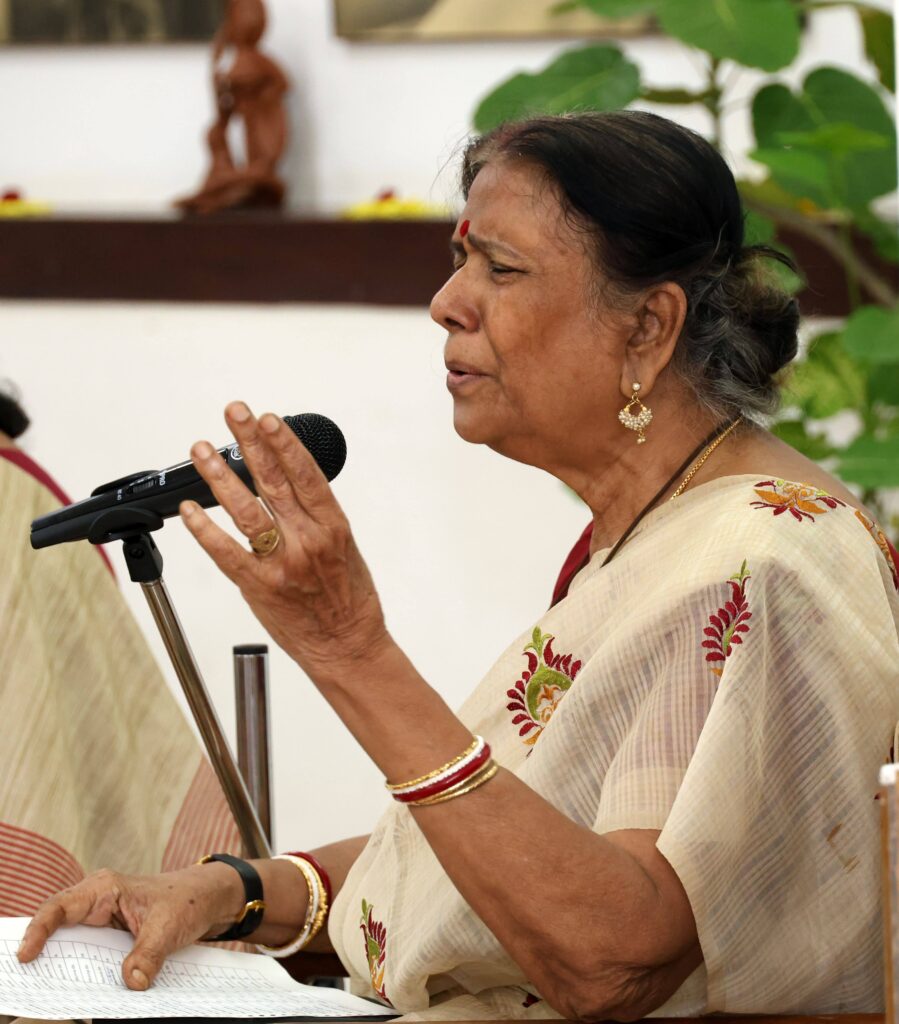
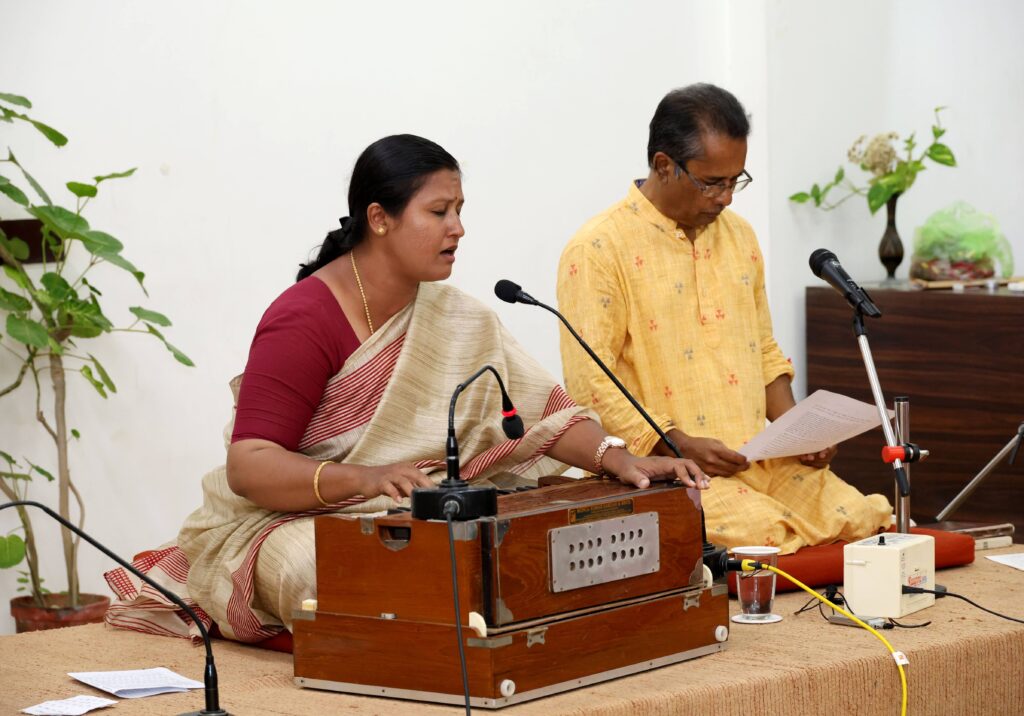
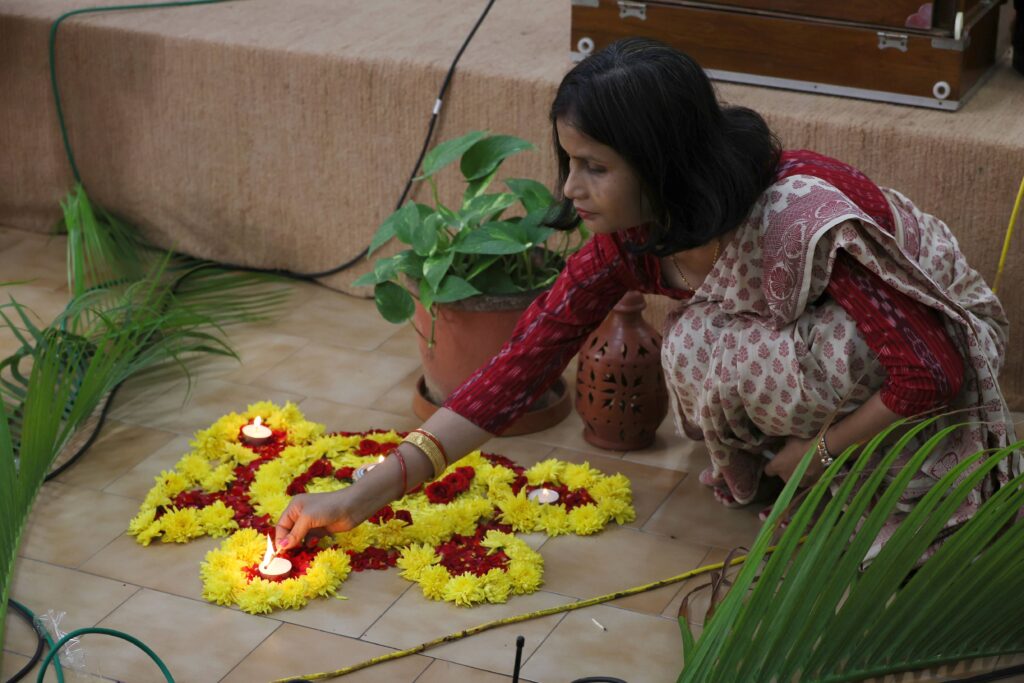
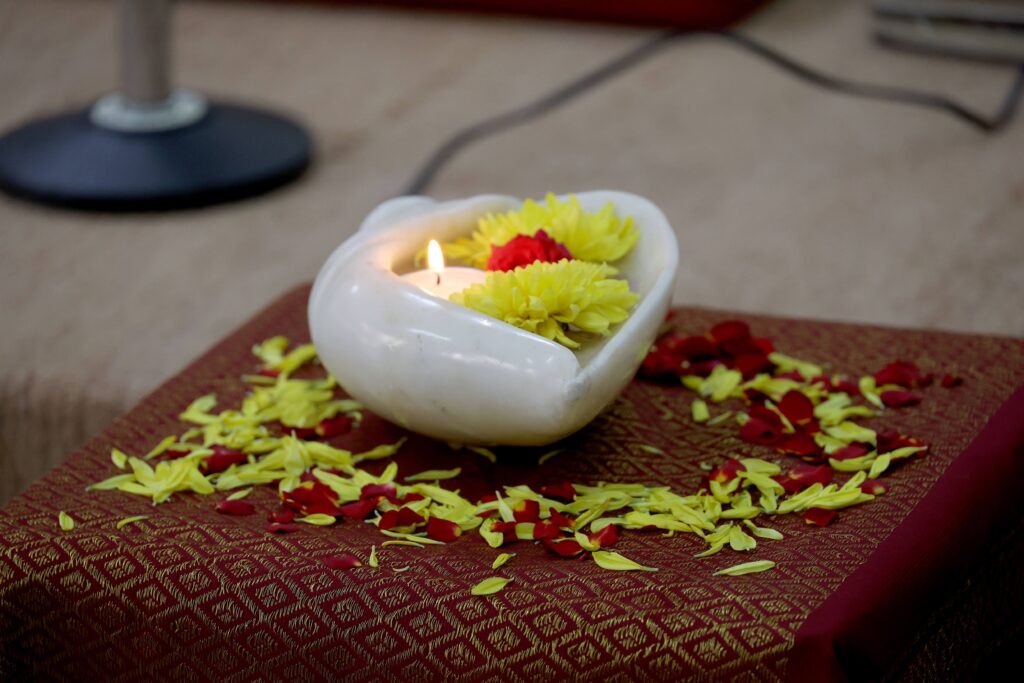
Smt. Reddy said that music since the ancient times in India has always been intimately connected to the Divine and was considered a sadhana, spiritual discipline. This became especially pronounced during the Bhakti movement which spread throughout the length and breadth of the country in the Medieval period. She also spoke about some of the key insights we find on the music in Bharat Muni’s Natyashastra. A brief explanation of the sapta swaras, seven notes was also given, including the difference between komal, shudh and teevra swaras and Smt. Arjita ably demonstrated these different notes.
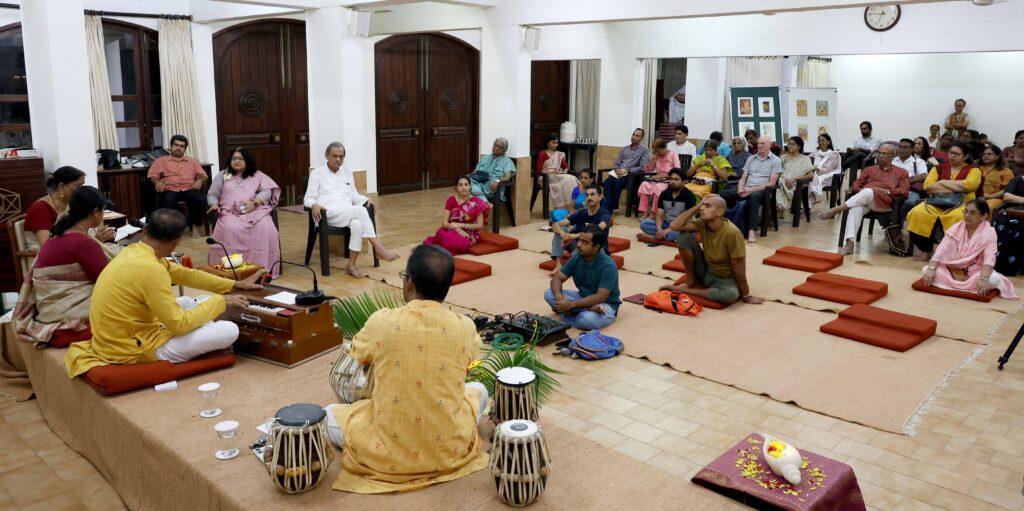
Smt. Reddy informed the audience that the main difference between Western and Indian classical music lay in the manner of its presentation. In Western classical composition every note was written down and the performers strictly adhered to the written score. Whereas Indian classical music mainly followed the structure of a Raga with no written composition. It was more in the form of Khayal (imagination) and depended on the improvisation and style of rendition of each artist within the framework of the Raga.
Smt. Arjita, Shri Uttam Ganguly and Smt. Deepshikha Reddy gave a few demonstrations of different Ragas. Each explained briefly the arrangement of notes in the specific Raga and also the time during which it is performed. Shri Gauri Shankar ably accompanied on Tabla throughout the programme.
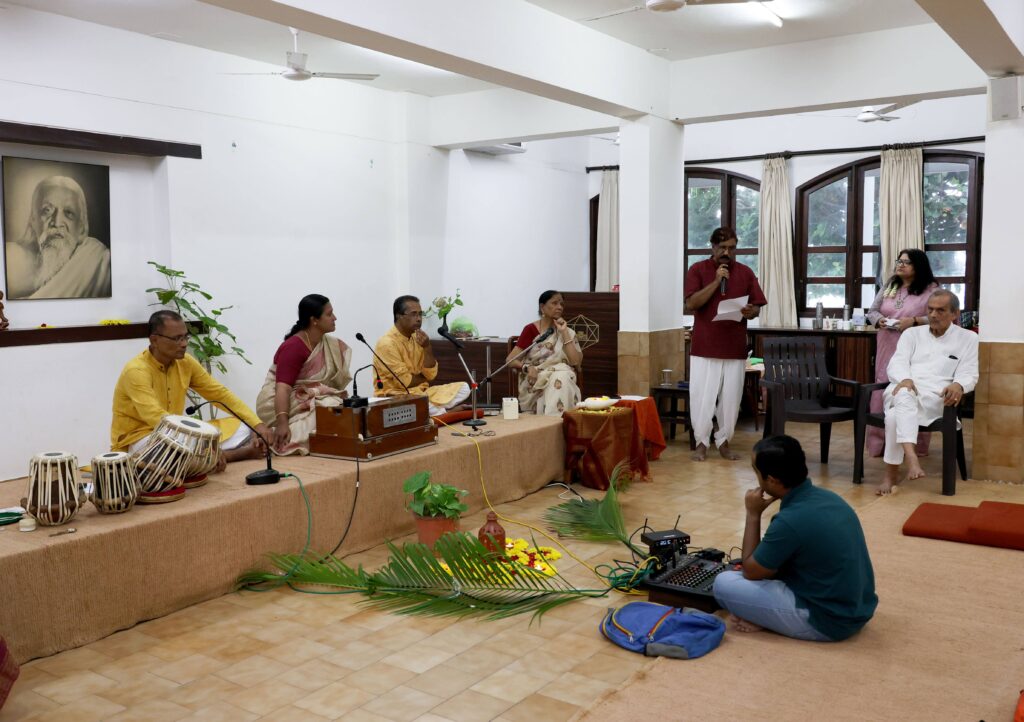
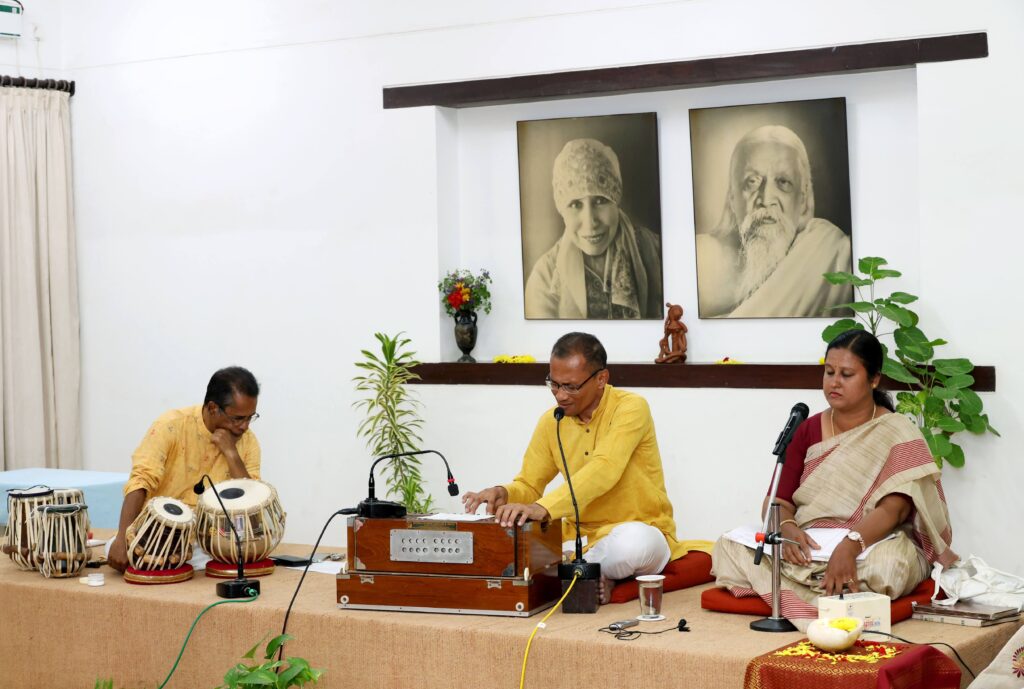
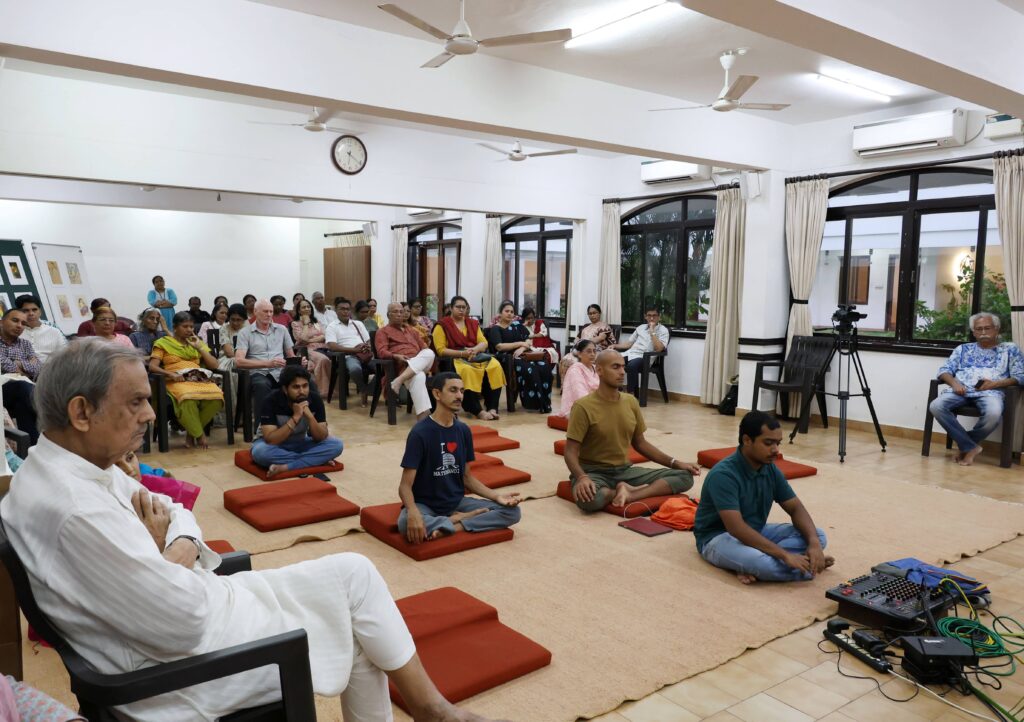
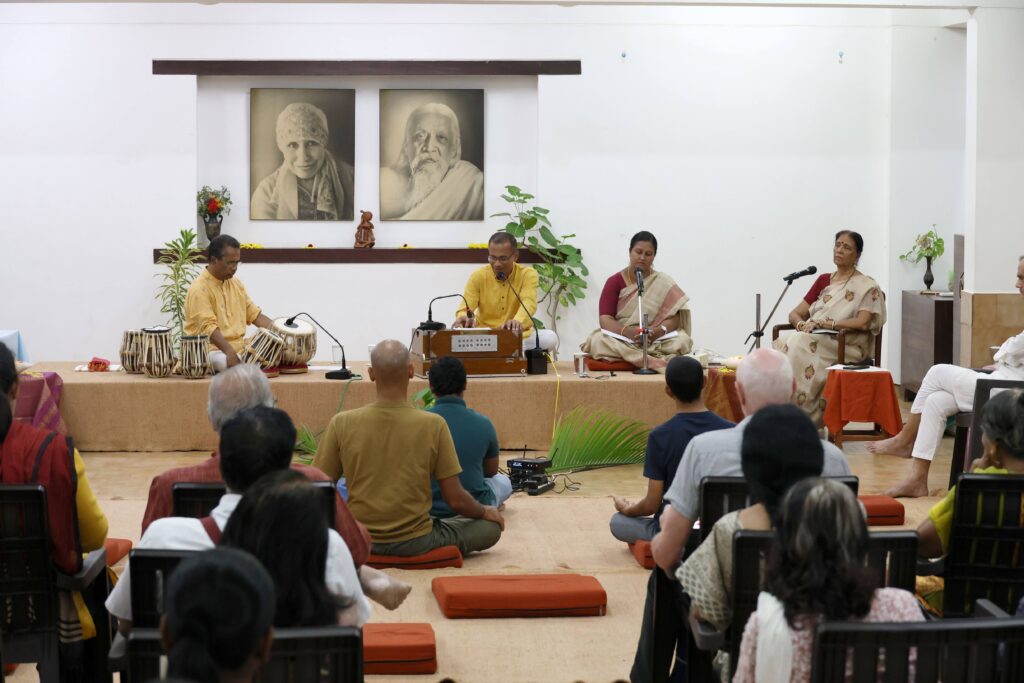
Smt. Reddy highlighted the point that in India music is closely assimilated with life. From birth to death, each stage of life is marked by various rituals and traditions, and music is an essential part of all those practices and customs. People across the length and breadth of this country have evolved musical traditions that accompany almost every activity of life, each uniquely beautiful and expressive of the values and practices of their communities and regions.
She then gave short definitions and along with the other three artistes demonstrated the varied forms from pure classical to semi classical to light classical genres of Hindustani Classical music. These genres included:
| Dhrupad | An ancient vocal form of music characterised by slow paced rendition of Alap and thereafter further elaboration |
| Khayal | Imaginative improvisation maintaining the basic structure of the Raga |
| Tarana | Composition using syllables without meaning focusing on rhythm and tempo |
| Thumri | Light classical song with love as its main theme |
| Dadra | A faster version of Thumri |
| Bhakti sangeet | A mention was made of various genres of devotional music practiced in India |
| Hori | Songs relating to Holi |
| Kajri | A north Indian folk song relating to the rainy season |
| Chaiti | A north Indian light classical vocal music sung in early summer |
| Baul | Devotional folk songs sung by the wandering minstrels of Bengal |
| Abhang | Devotional songs sung for Lord Vitthala in Maharashtra |
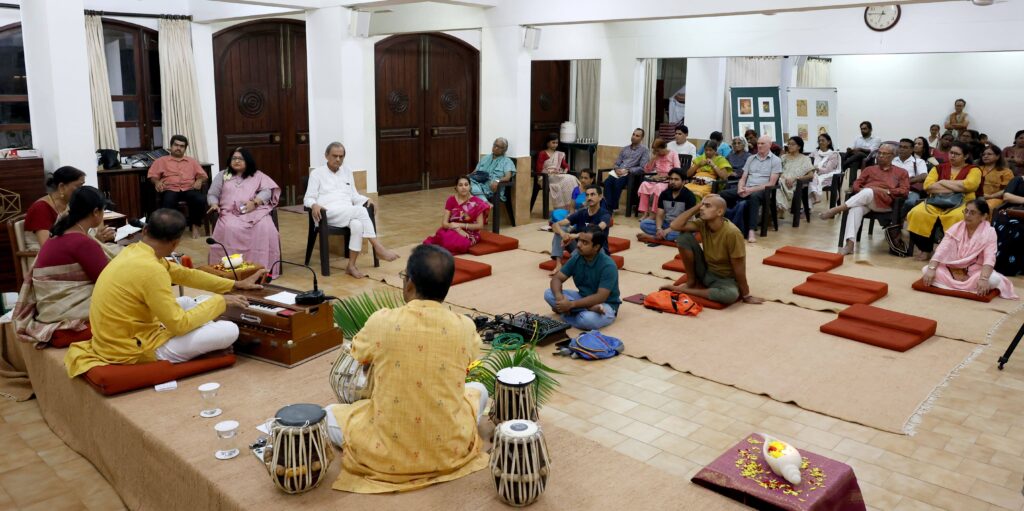
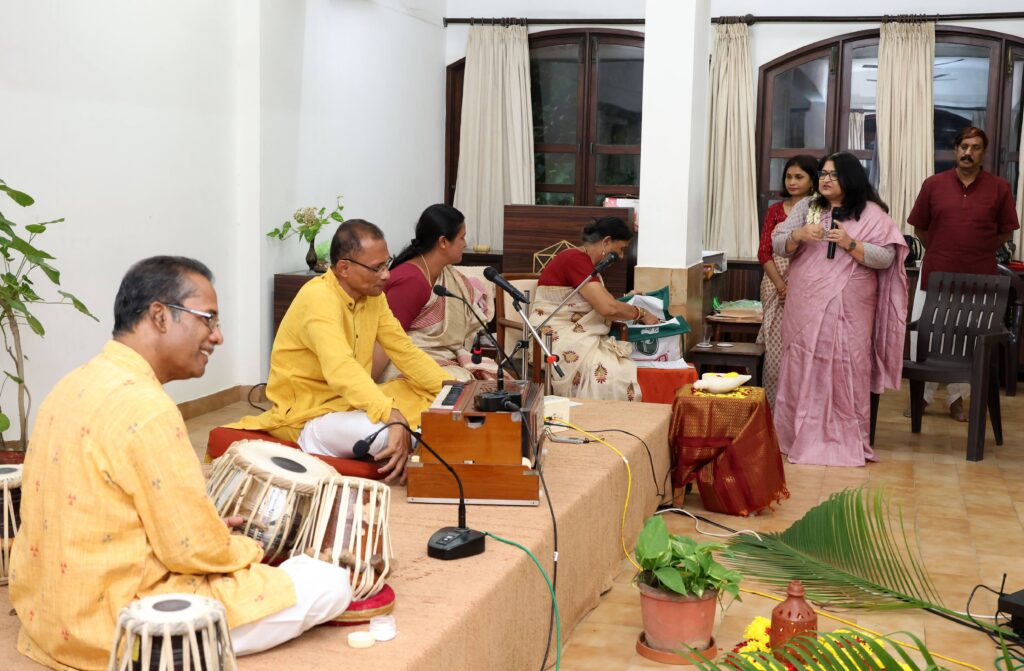
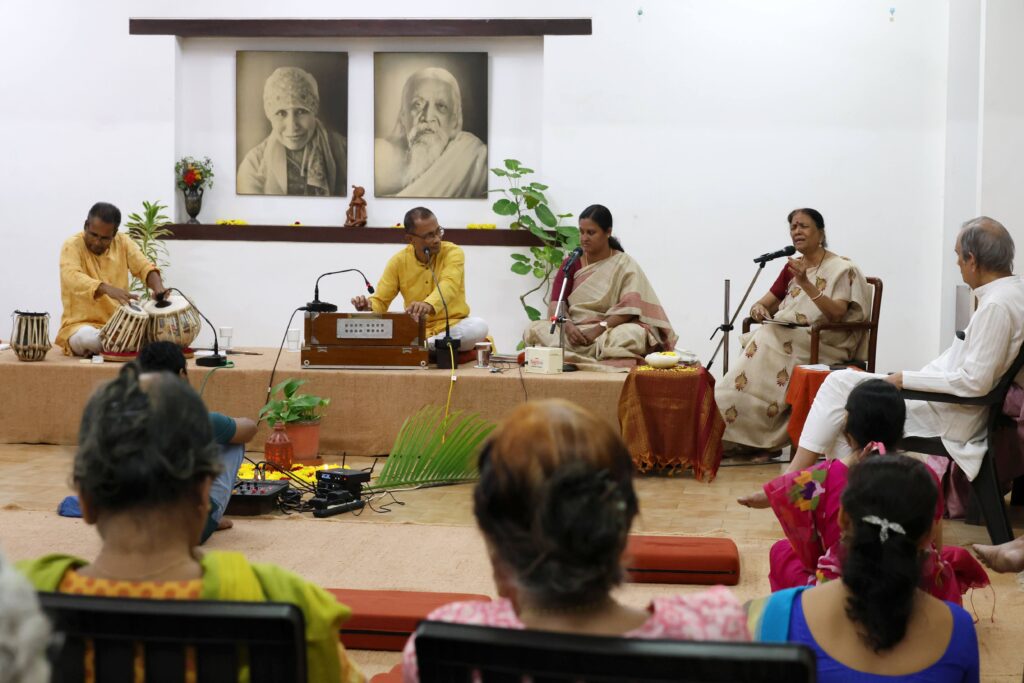
Finally, the session came to a close with a ghazal and a film song based on classical Ragas. Everyone present was mesmerized to experience the richness and wide spectrum of Indian classical music and wished there was more time to explore other forms which could not be presented due to shortage of time.
However, the presentation of such a wide variety of musical compositions with such skill and finesse enthralled the audience and they heaped praise on the artistes and thanked the organisers for conducting such a wonderful programme and even requested to organise more such events in future. Small tokens of gratitude were presented to the performers by BhāratShakti department.
